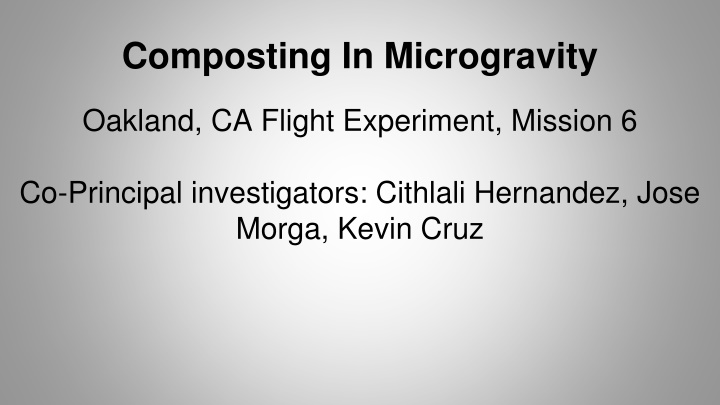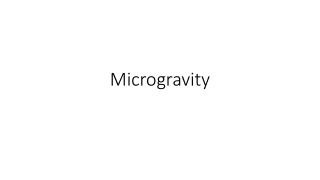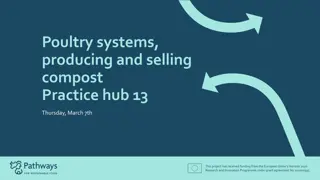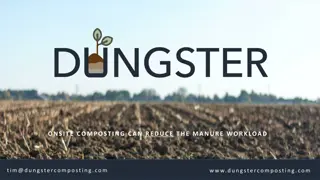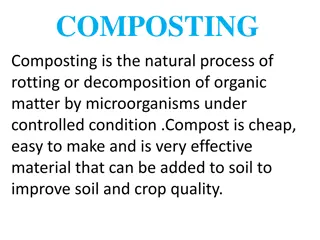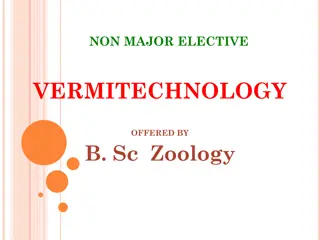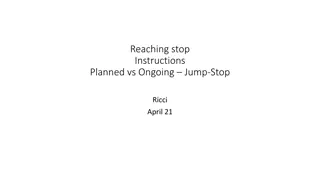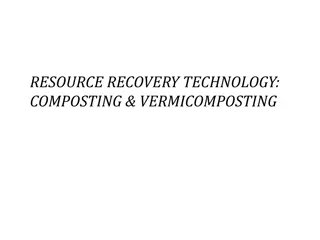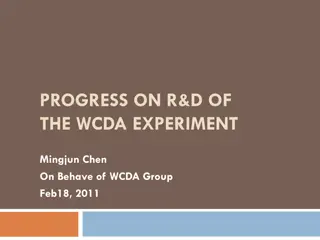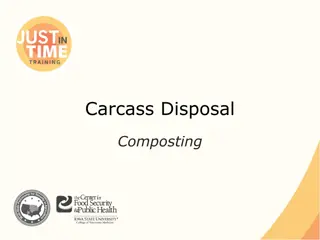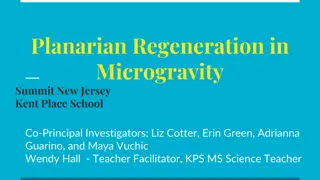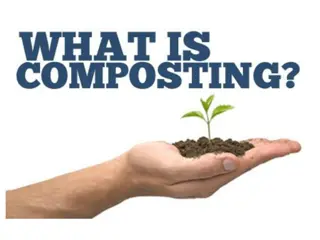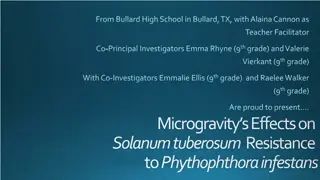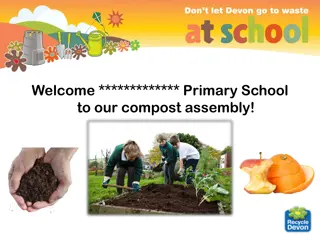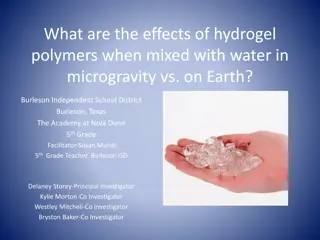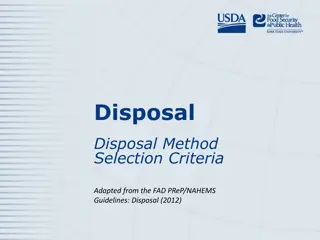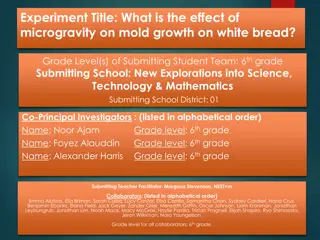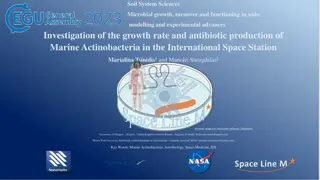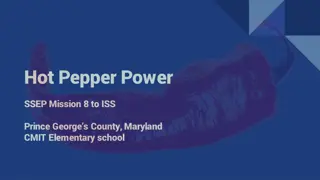Composting in Microgravity Experiment
Investigate how Eisenia Fetida can compost in microgravity aboard the ISS to potentially support sustainable farming and waste management in space. The project aims to understand the impact of microgravity on worm behavior and soil composition, with implications for optimizing space resources. Through vermicomposting, scientists explore using worms to convert food waste into nutrient-rich soil that can support plant growth for oxygen and food production in space.
Download Presentation

Please find below an Image/Link to download the presentation.
The content on the website is provided AS IS for your information and personal use only. It may not be sold, licensed, or shared on other websites without obtaining consent from the author.If you encounter any issues during the download, it is possible that the publisher has removed the file from their server.
You are allowed to download the files provided on this website for personal or commercial use, subject to the condition that they are used lawfully. All files are the property of their respective owners.
The content on the website is provided AS IS for your information and personal use only. It may not be sold, licensed, or shared on other websites without obtaining consent from the author.
E N D
Presentation Transcript
Composting In Microgravity Oakland, CA Flight Experiment, Mission 6 Co-Principal investigators: Cithlali Hernandez, Jose Morga, Kevin Cruz
Experimental Question: Can Eisenia Fetida compost in microgravity? We will send Eisenia Fetida to the ISS and look for changes in the soil composition ( nitrogen, pH, phosphorus) We are looking to find out how microgravity will affect the worms and the soil Composition Why is it important? Vermicomposting could help scientists on the ISS because they could use Eisenia Fetida as a source to save them space by composting the food waste they don t eat. If the Eisenia Fetida can make rich soil it could be used to plant seeds that could provide oxygen or food.
What is Vermicomposting? Soil and Food Waste -The pH levels can be acidic or basic which is not good for a plant s growth -Also this soil may not have many nutrients The Worms -The worms will burrow in the soil, eating organic material Castings -Worm s casting will have a pH of 7 (neutral) and can have high levels of nutrients The Soil -Soil with castings will be mixed thoroughly and have a neutral pH as well as high levels of nutrients
How are we going to test this? We are sending 2 Eisenia Fetida in a type 2 FME with water and nutrients to survive. Astronauts will mix the two sections, mixing the eggshells and the worms. 2 Eisenia Fetida 4.0 grams of potting soil Oakland tap water 1 cubic inch of newspaper 1 crushed eggshell 3 mL of Oakland tap water
The ground truth experiments Experiments to test worm survival in an FME: - Tested different amounts of water,soil, eggshells and newspaper to determine the right amounts for worm survival Control Experiment: -While the experiment is in flight we will run a simultaneous experiment in our classroom -The ground experiment will be our control so it will be exactly the same (2 Eisenia Fetida and the food waste- newspaper and eggshells, also the soil and the water) -By running a ground experiment we will have an experiment to compare and contrast both the ground and the microgravity experiment -The ground experiment will help us determine what Eisenia Fetida can do in microgravity compared to earth
How will we measure the results? -We will measure our results by using a soil tester (will determine how much eggshells and pieces of newspaper was turned into soil). This will test for amounts of nitrogen, phosphorus and potassium. - We will test before flight and after flight for both the ground and microgravity experiment - We will measure pH using a pH tester so we can compare and contrast both the composted soil from microgravity and Earth to see how neutral the pH is.
Hypothesis and Possible Results Our Hypothesis is: Eisenia Fetida will have the same effect on soil composition and pH in microgravity as they do on Earth. Possible Outcomes: Eisenia Fetida have the same effect in microgravity proving our hypothesis to be true Eisenia Fetida can be used on the ISS and by future space travelers as a composting source and to create rich soil Eisenia Fetida cannot survive in microgravity under the conditions we put them in (small space, limited resources) Soil composition does not change Eisenia Fetida can survive, but don t change the soil composition in the same way due to microgravity
Many Thanks to our Community Partners Subaru of America Center for the Advancement of Science in Space Philanthropic Venture Fund Superintendent Dr. Gary Yee East Bay Community Foundation Urban Promise Academy Rogers Family Foundation Oakland Unified School District Nasa Ames Scientists: Jacob Cohen Sarah Mitchell Ann Kapusta
